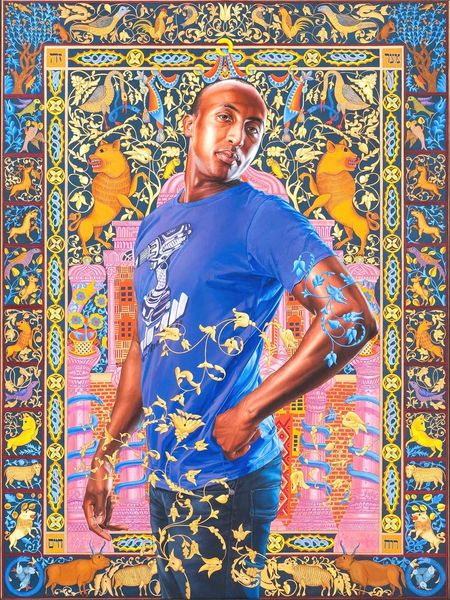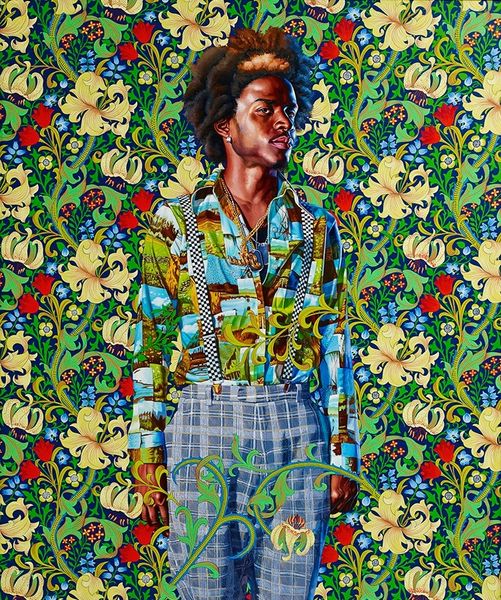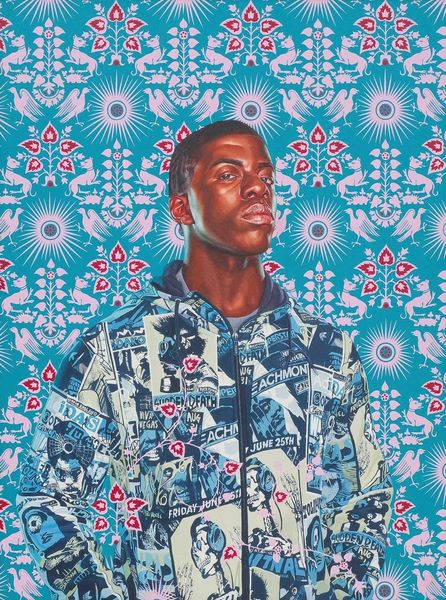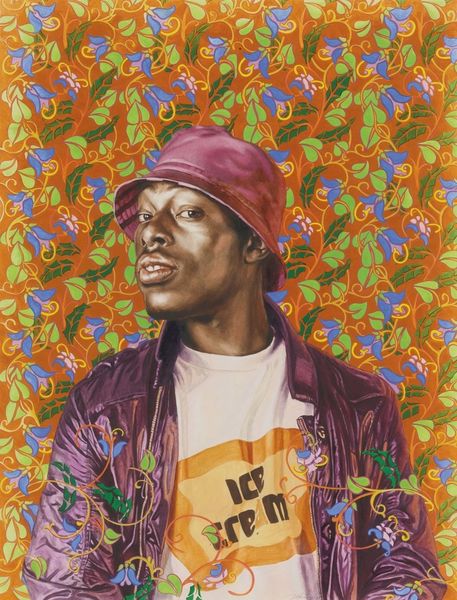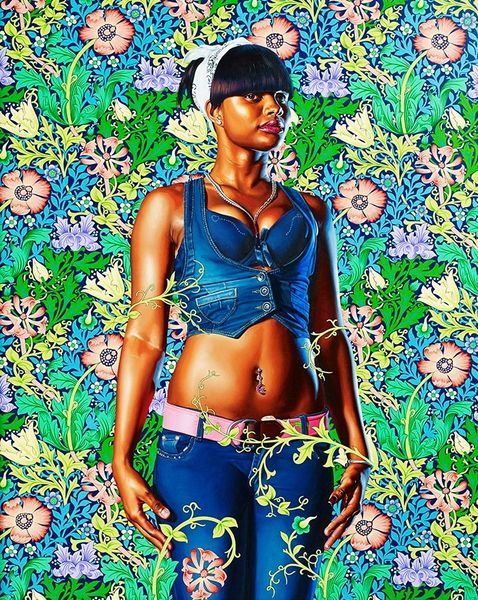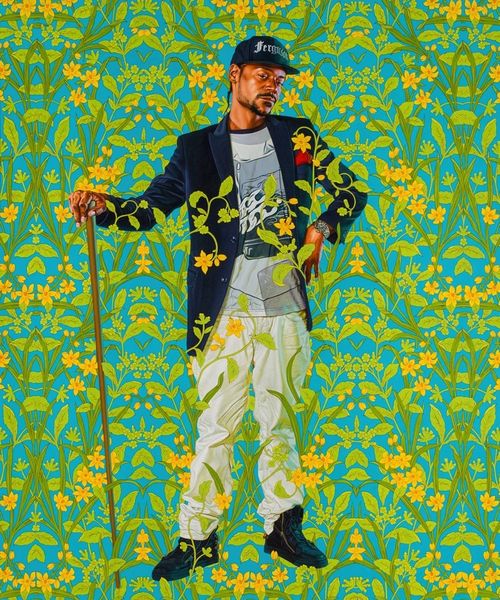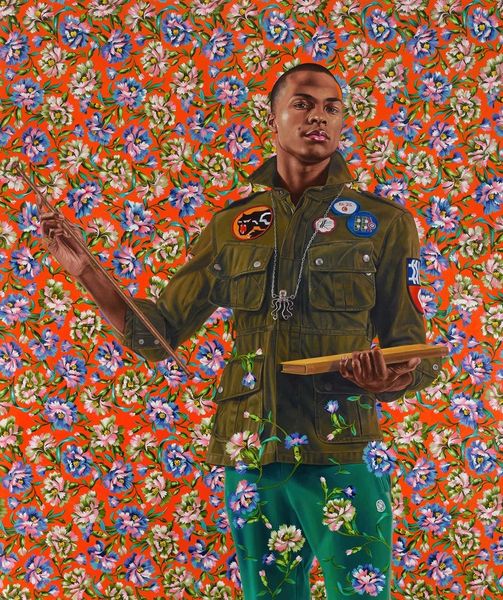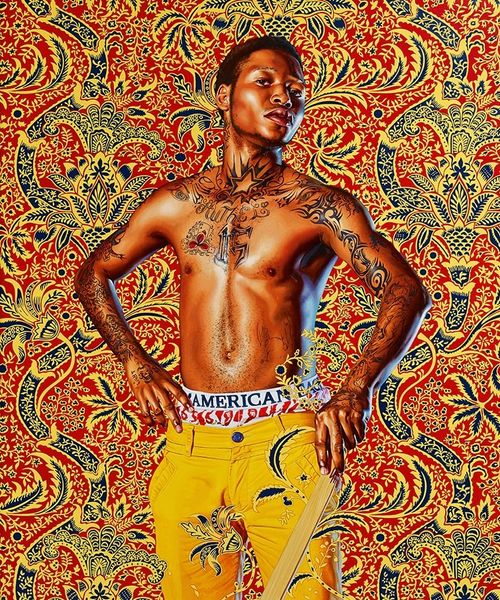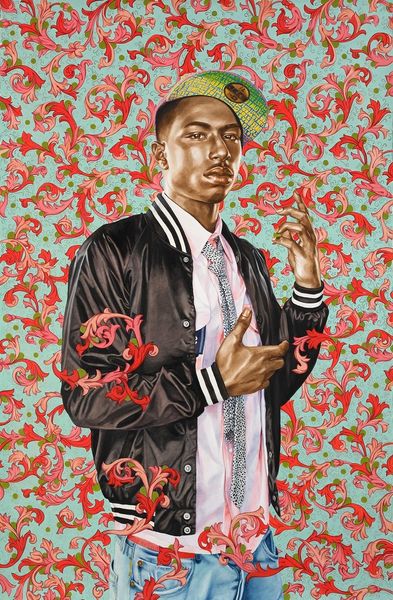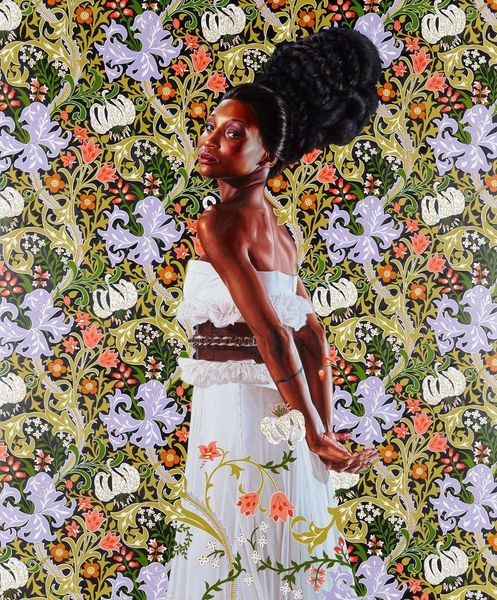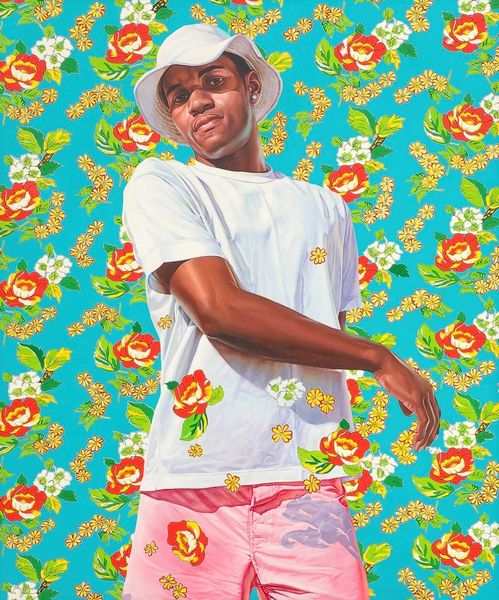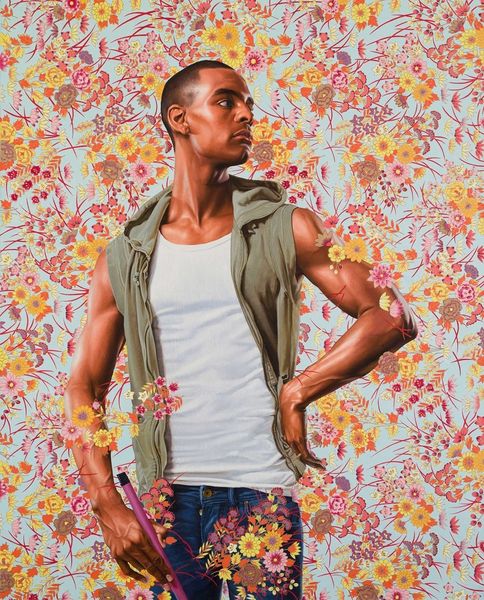
#
pattern-and-decoration
Copyright: Modern Artists: Artvee
Editor: Looking at Kehinde Wiley's "Benediter Brkou" from 2011, a mixed-media painting, the ornate backdrop immediately catches my eye, especially in contrast with the subject's contemporary clothing. How do you see the relationship between these seemingly disparate elements? Curator: It’s vital to understand Wiley’s process, his means of production. The opulent, historically-referential backgrounds, like that busy tapestry here, aren't just decorative. They’re manufactured, often referencing fabrics and designs tied to specific class and cultural power. He then places young Black men, street cast and styled, within these structures. It challenges the established history of portraiture and how labor and consumption are reflected in status. Editor: So it's about more than just aesthetics? The subject's t-shirt, with the commercial image printed on it... how does that contribute? Curator: Exactly. Think about the chain of production – the cotton grown, the shirt manufactured, the image reproduced. Each layer speaks to a complex web of labor and consumerism. And notice how the flowers on the pants and arm become ornamentation. Wiley conflates "high" art portraiture with these readily accessible, mass-produced commodities. It begs us to consider: where is the value truly located? Is it in the hand-painted detail, the silkscreened image, the denim of the jeans? Editor: That’s fascinating, I never considered the actual materials in such a socioeconomic light! I thought of it as primarily decorative, or stylistic. Curator: And that's the trap, isn't it? By seducing us with beauty, Wiley sneaks in this commentary about power, access, and the inherent value we assign to things. Looking closer, it's really about who gets to be represented and in what materials they are wrapped. Editor: I see how analyzing the materials and their production helps reveal Wiley's deeper intentions, especially regarding power structures. Curator: Indeed. Understanding the means of production—the materials and their context—allows us to unpack the complex social commentary Wiley is making. We're seeing history painted with contemporary life and disposable consumer items, posing pertinent questions about both historical and present class dynamics.
Comments
No comments
Be the first to comment and join the conversation on the ultimate creative platform.
